Champagne in magnum is always impressive. Palmer & Co. is a champagne producer who ages their magnums longer than usual before being put on the market: for ten years. The currently available vintage (1998) and the soon to be launched (1999) were presented along with some older magnums at a recent tasting. BKWine’s reporter Roland Eriksson was there.
Opening a bottle of Champagne means, in many cases, that there is a party! And to make things even more festive one can choose a really big bottle, for example a magnum (150 cl).
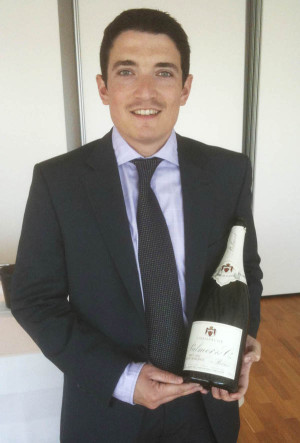
This was the theme when the importer Oenoforos invited to a tasting together with the new export manager Raymond Ringeval, a handsome young Frenchman with a very well-groomed Clark Gable mustache, new to Palmer but previously with a similar responsibility at Ayla and at Bollinger for 6 years.
Palmer & Co. is a cooperative, a word which makes me think of the Soviet Union, Potemkin scenes and 5-year plans. But in this case it is totally wrong since they deliver excellent quality in relation to the price. The company was founded in 1947 as Producteurs des Grands Crus de Champagne by 7 enthusiastic growers in Avize that in the shadow of WWII thought it was better to join forces than to fight alone to get their wines on the market.
In 1959 the company moved to Reims. Today it has grown significantly to 320 growers that are contracted 10 years at a time. In total they have access to an impressive 380 hectares of which 180 hectares are classified as grand cru and premier cru. 80 hectares are in the villages Trépail and Villers-Marmery in Montagne de Reims where they grow chardonnay, which is the base for the winery’s blanc de blancs.
They employ 6 winemakers. Annual production is currently exceeding 600 000 bottles. Palmer has practically vineyards in each of the sub-regions of Champagne growing the three main grapes: chardonnay (50%), pinot noir (40%) and pinot menuier (10%). Sweden is actually Palmer’s biggest export market with approximately 100,000 bottles sold per year!
All wines are fermented and aged in stainless steel tanks, with the exception of older reserve wines, which are added “as an extra spice” in the cuvée, and a red wine produced and aged according to the solera method to get a more even colour when blended with white wine to a rosé champagne (to produce a rosé wine in the usual way, by letting the red grape skins be included for a short time during fermentation, is unusual in Champagne, a method known as saignée). Both of these wines are aged in oak barrels.
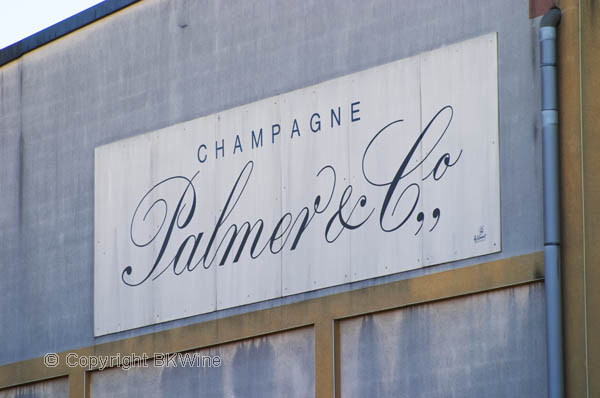
Raymond has worked for one of the most respected houses, yet he thought Palmer was different. Above all, he was first impressed by that they had more modern wine presses than Bollinger and that they age their wines on lees well beyond what the law requires. The minimum is 15 months for a non-vintage label and 3 years for a vintage champagne.
Palmer ages a non-vintage wine for about four years while the millesimé (vintage champagne) gets 5-8 years of aging and a magnum at least 10 years on the lees before being put on the market, which is quite unusual for wines in this price range. This also means that the magnum bottles always are of an older vintage than the standard bottle size which unfortunately is not always apparent if you do not pay attention.
Palmer bottles in all the bottle sizes from demi (37.5 cl) to Nebuchadnezzar (15 litres). There are actually even bigger bottles on the market such as Melchizedek (30 liters), but what is one to do with such a bottle? An unusual thing with all Palmers bottlings is that the second fermentation always takes place in the final bottle. (Ed. note.: For large bottle sizes, above magnum, it is common to do the second fermentation in “normal” bottle size and then fill the larger bottle from those.)
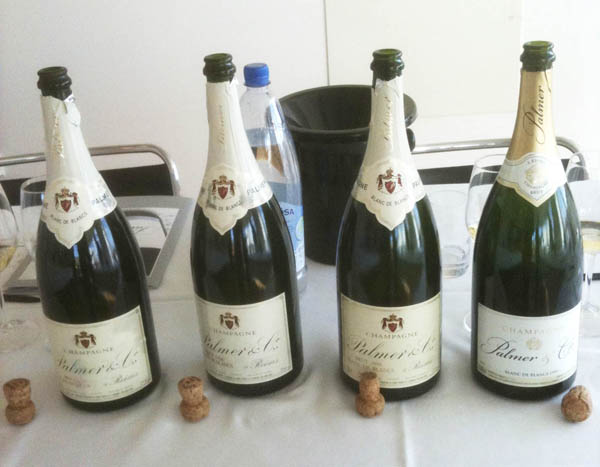
Today’s theme was Champagne Blanc de Blancs (100% chardonnay) in magnum, a bottle type that most people think is the optimal for aging, and that small enough not to feel too uncomfortable to handle. All wines came from Palmer’s cellar and all were degorged about a year ago, which means that both the 1985 and 1996 feels very youthful. As long as the wine rests on the lees it matures slowly and aging potential is very long.
Palmer has a relatively large stock of older vintages even back to the late 1970s, at affordable prices.
Tasting Palmer champagnes from magnums
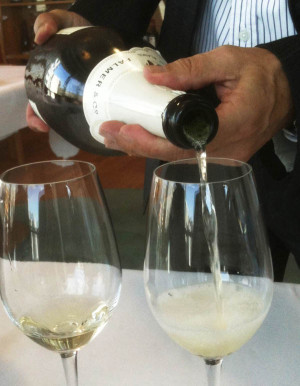
1999 Palmer & Co. Blancs de Blancs Brut (magnum)
Colour: Shimmering greenish,
Nose: Fresh, with elegance, some maturity notes, citrus, mineral, hazelnut, cake, caramel,
Taste: Medium-bodied, fresh, with citrus, grapefruit, mineral, green apple and long acidity.
84p
1998 Palmer & Co. Blancs de Blancs Brut (magnum)
Colour: Light yellow,
Nose: Big, freshness, quite mature, citrus, mineral, brioche and light earthiness,
Taste: Quite full-bodied, creamy, quite mature, hazelnut, dry, fresh with a pleasant bitterness, long.
85p
[divider_flat]
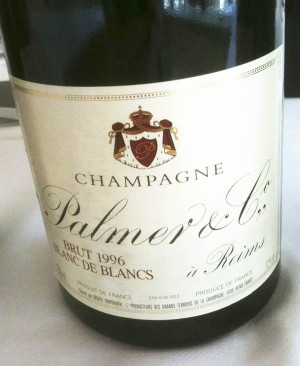
1996 Palmer & Co. Blancs de Blancs Brut (magnum)
Colour: Light yellow,
Nose: Young, big, fresh, slightly closed, citrus, lime and delicious mineral tone,
Taste: Relatively young, big, fresh, tangy, with a lot of mineral, grapefruit, citrus, long and intense, has a long life ahead of him, is said to have won over Roederer Cristal 1996 at a blind tasting.
93p.
1985 Palmer & Co. Blancs de Blancs Brut (magnum)
Color: Light yellow,
Nose: fairly big, mature, bready and toasty, with peach and nuts,
Taste: Quite big, mature, mellow, earthy character, mushrooms, roasted notes, nuts, good acidity and length.
90p.
Champagne Palmer & Co. is represented in Sweden by Oenoforos who had also organized the tasting.
Roland Eriksson writes on BKWine Magazine on wine tastings with wine merchants and importers in Sweden. Roland is the author of a book on cognac (A Handbook: Cognac, 2007, published in Swedish) and one on rum as well as one on tea.
[box type=”info” style=”rounded” border=”full”]
For the champagne enthusiast it is always interesting to visit the Champagne region some 150 kilometres east of Paris, where you can also enjoy the regions fine gastronomy. Join us at BKWine on a wine tour / gourmet trip to Champagne!
Travel to wine country with experts on wine and the wine tour specialist.
[/box]


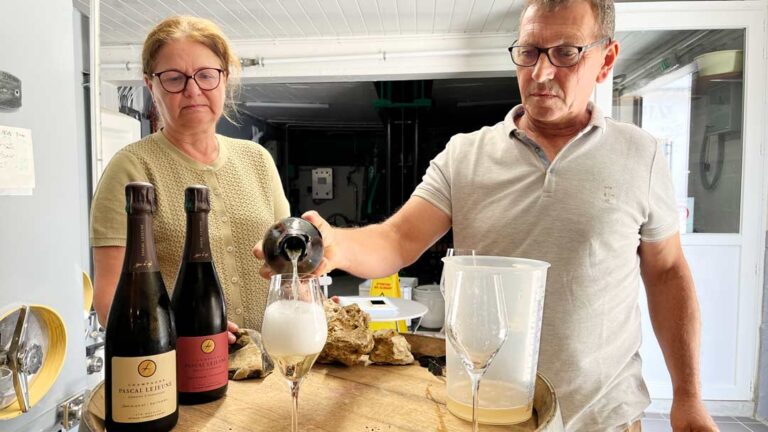
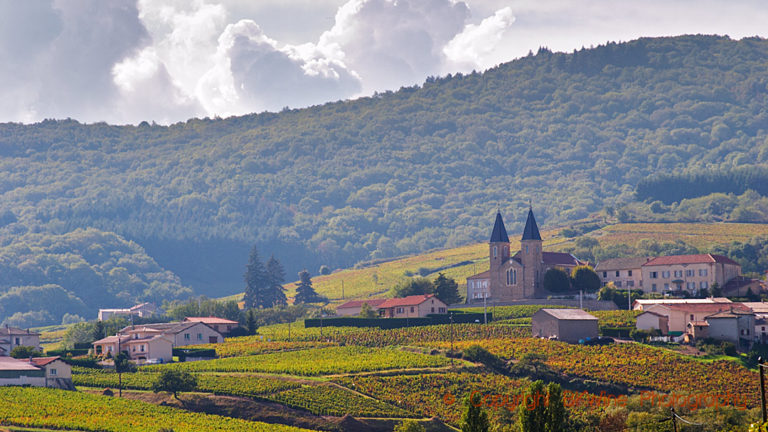
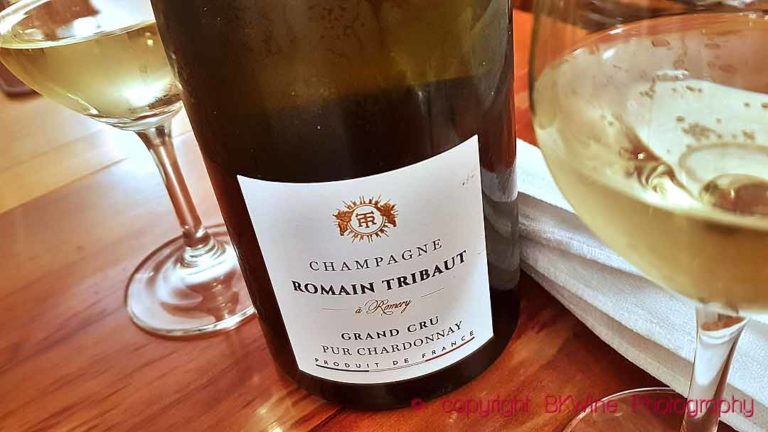




One Response